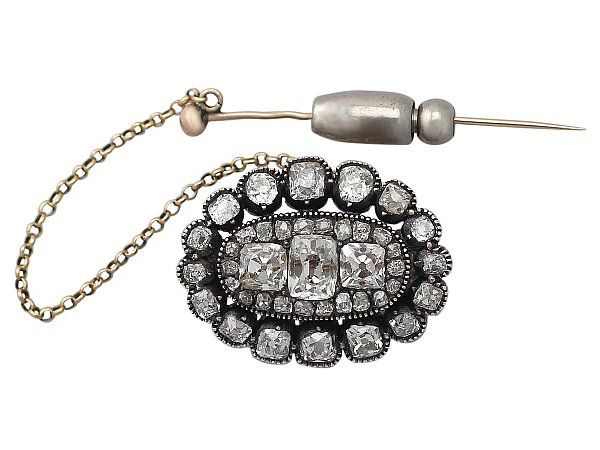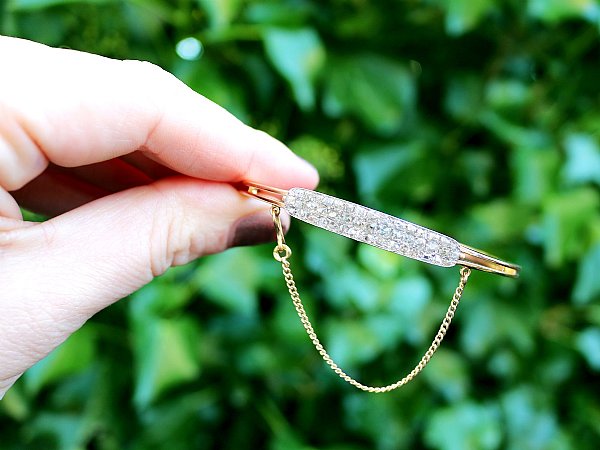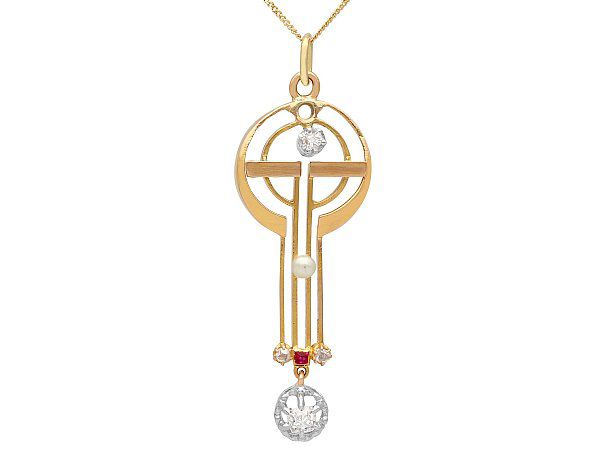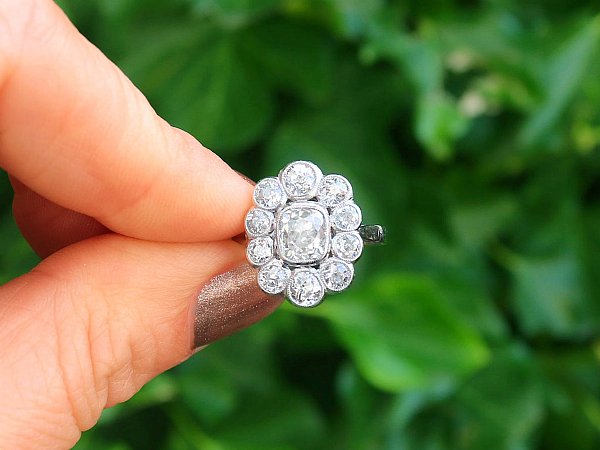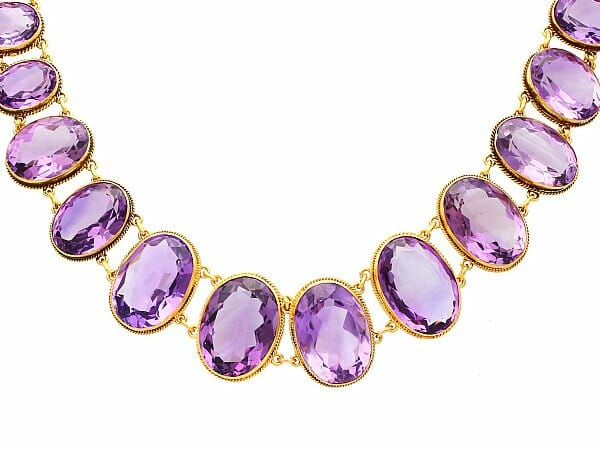The History of The Old Mine Cut Diamond
The Old Mine cut diamond was developed through the gradual process. Cutters and merchants grew to understand how to achieve a better quality of brilliance compared to the earlier – more simple- table cut and point cut diamonds. They also realised which cuts were most popular with buyers and those wearing the jewels and adapted accordingly.
Before the advent of ‘bruting’ diamond cutting was completed only by hand. Of course, this demanded a high level of skill and was time consuming- factors which limited the availability of cut diamonds. This process was also expensive: it requires a lot of raw materials to cut a rough shape into a symmetrical stone.
Bruting simplified this process: the technique of bruting means to rub one diamond with another diamond (or diamond chip) to smooth it into the required shape. The first (manual) bruting machines were invented by Henry D. Morse and Charles M. Field in the early 1870s. They established British and U.S. patents for steam-driven bruting machines in 1874 and 1876 respectively. Following this early model, the first mechanical bruting machine was invented in 1891- making diamond cutting a lot easier!
Diamonds have always been primarily priced based on their weight. Therefore bruting was not only a skill of creating a beautiful and brilliant diamond, but also a way of cutting a diamond while retaining its weight (and therefore its value). These stones were cut based around the need to salvage the greatest amount of weight possible.
The popularity of the Brilliant cuts grew and grew after their invention circa 1955. This meant that many of the existing Table cut, Point Cut and Old European cut stones were recut into the new, more desirable design.
The design changes proved to be popular due to the increased brilliance in the stones thanks to more sophisticated cutting patterns, which were based in geometry and mathematics. Diamond cutters had now begun to realise that a diamond’s brilliance/ scintillation can be affected by the stone’s cut. They therefore began to consider the best proportions and how the light would reflect. Traditionally, the shape of point cuts had been based on the initial desire to keep the shape of the natural octahedral crystals as close as possible to the form in which they were discovered in the diamond mine, saving raw material. As time passed, diamonds were still priced in relation to their weight, but other factors were also taken into account; the price would now also be based on the colour, cut and clarity.
Point cuts are the only cut that we have any record of until the fourteenth century. They are the most basic cut of diamond that we have any evidence of; they vary only fractionally from the shape of the natural form the diamonds would have been discovered in.
During the fourteenth century, the table cut appeared as an adaptation of the point cut. The point cut’s sharp, pointed surface was polished flat- possibly to make it more convenient and comfortable to wear in jewellery, or to allow the wearer to see inside the diamond from above.
A large culet at the bottom of the stone (the ‘pavilion’) was a feature that may have been intended as a reflecting facet. The Table Cut remained a popular cut until seventeenth century and many point cuts were re-cut into table cuts.
A factor that strongly contributed to this change in cutting is the collective realisation by the diamond cutters that the points and edges are the thinnest part of a natural crystal; therefore the most susceptible to breakage and etching. To eliminate this risk as completely as possible, they ground down the culet (point at base of pavilion) that was most vulnerable: the one on the underside of the ring which would not be protected by the metal band or setting of the ring.
Old Mine Cuts are also known as Triple Cuts. They evolved from the Single and Double cuts that followed the table cut (when diamond cutters continued to reduce the size of the table of the diamond and increase the amount of facets surrounding the table). Cutters discovered that the increase in the brilliance of the diamond was due to the multitude of facets- rather than from having the largest window into the crystal.
What is an Old Mine Cut Diamond?
Around 1730, an influx of Brazilian diamonds entered the market, and most of these rough diamonds were cut into cushion shaped diamonds. The predominant shape during this era was the Old Mine Cut – derived simply from the mines that the diamonds were discovered in.
The most typical feature of the Old Mine cut diamond is that they were hand crafted (before the introduction of bruting and much specific knowledge/ guidelines on cuts and proportions) which is why they are square. The fact that they were handcrafted means that their facets, sides and rounded corners were not uniform- unique amongst diamond cuts. Modern diamond cuts are valued for their uniformity within their specific cut. Old Mine Cut diamonds, on the other hand, are mainly valued for the impressive skill and eye of the diamond cutter who had to do it all by hand.
Generally speaking, Old Mine cut diamonds have deeply cut proportions. This means that the pointed ‘bottom’ (pavilion) is longer and further from the surface or top facet than modern brilliant cuts. The reason for this is that before modern cutting techniques, diamond cutters didn’t realise that they could achieve as many facets with less material, i.e. by using a smaller diamond and therefore less raw material.
With an Old Mine Cut, the crown of the diamond sat higher but the tale was smaller. This, again, is due to the lack of expertise on maximising the impact that a wider table has on the amount of brilliance visible to the wearer of the diamond.
The very point of the underside is polished flat, to protect the stone from breakage. This gives the illusion of the diamond having a ‘hole’ in the centre of the stone. This is the most distinguishable feature of the Old Mine cut diamond, as contemporary diamonds don’t always use this technique and if they do it is minute. This appearance is not generally favoured in modern diamonds.
Why Choose Old Mine Cut Diamonds?
Old Mine Cut Diamonds have the privilege of being uniquely imperfect; their lack of exact symmetry and uniformity is what separates them from all modern stones. The craftsmanship of those who created these cuts by hand so painstakingly can be witnessed by examining the stones themselves. This skilled craftsmanship is combined with the beauty and natural wonder of a more simply cut stone.
At AC Silver we are pleased to offer our customers some wonderful antique Old Mine cut diamonds, from those set in stunning rings to diamonds which accent brooches and pendants. We are able to present these pieces in the knowledge that they are all exceptional quality examples of antique jewellery, with a rich history behind them.

